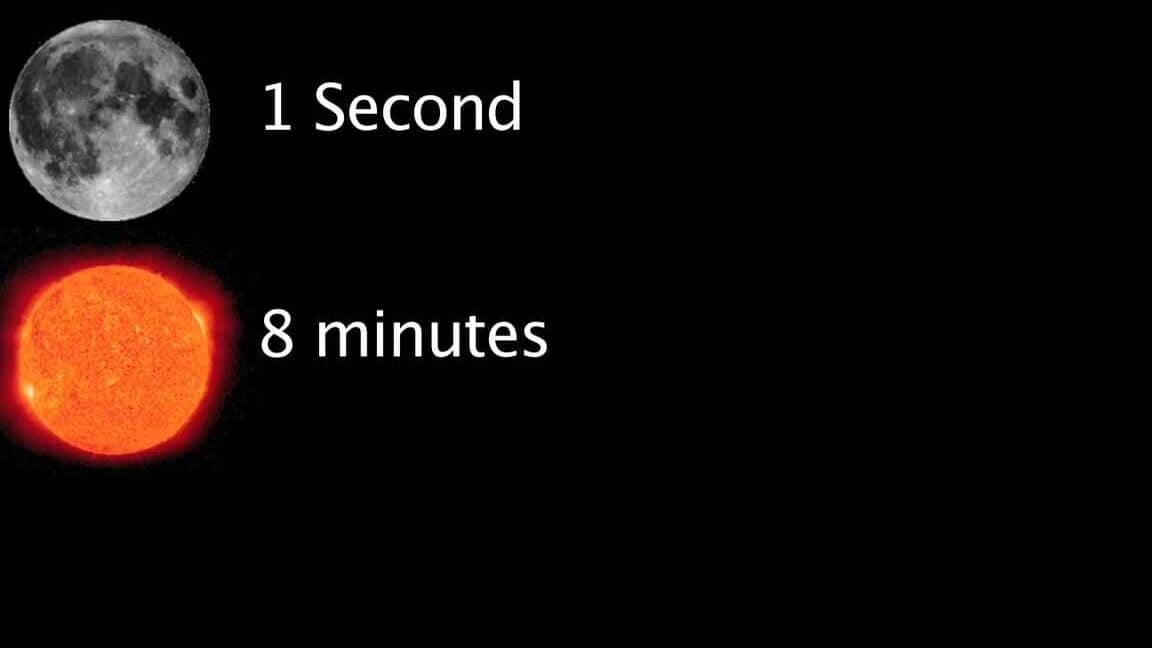
When it comes to the apparent size of the moon, the general consensus is that it appears larger when it is near the horizon compared to when it is high in the sky. This belief is often based on personal observations of individuals who have seen a larger moon low over houses and trees, especially during sunrise. On the other hand, the moon tends to appear smaller when it is positioned higher in the sky.
It is worth noting that there may be some individuals who hold a different opinion. However, the majority tend to agree that the moon appears larger near the horizon and smaller when it is high in the sky.
Speaking of the Moon, it is worth mentioning that it can be observed at its highest point in the sky, which is known as the zenith. However, from Russia, one cannot see the Moon exactly at the zenith. Although in the southernmost parts of Russia, specifically in the remote areas of the Caucasus near the border with Azerbaijan, there are periods, occurring once every 18 years, when the Moon can reach a height of 79 degrees. This is only 11 degrees away from the zenith, which for someone not involved in astronomy is considered close. However, in the majority of towns and cities, the Moon does not rise more than 60 degrees in the sky, which is only two-thirds of the way to the zenith.
Throughout history, humans have relied on gathering fruits and working in agriculture to survive. Despite this, looking upwards has always required great effort. To the human eye, anything above a 45-degree angle is perceived as reaching the highest point, the zenith.
Returning to the Moon
For a long time, I held the belief that when the Moon is at the horizon, it appears bigger, larger, and therefore closer to Earth. This difference seemed significant and unquestionable. However, everything changed when I began studying astronomy at the Moscow Planetarium during my 5th grade year. Although we had not yet covered geometry in school, astronomy heavily relies on this subject. Suddenly, many things were turned upside down and fell into place.
It was then that I realized how could I have ever imagined it otherwise!
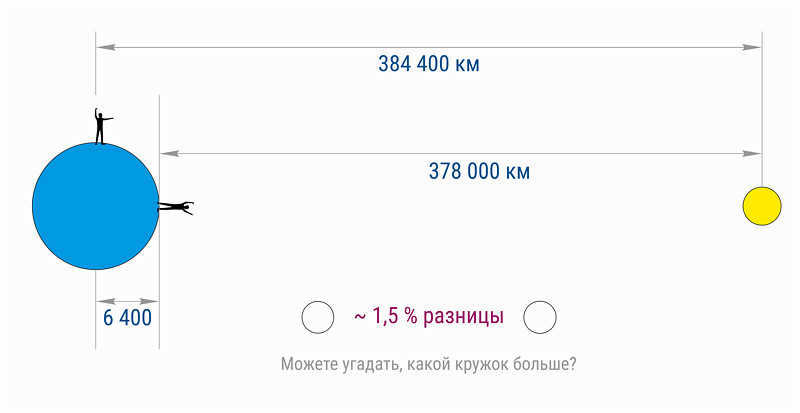
When an individual looks at the Moon on the horizon, they are actually positioned further away from the Moon by the Earth’s radius compared to someone who is observing the Moon directly above them.
This concept is clearly illustrated in the diagram, but in reality, it may not be immediately apparent.
In fact, the opposite may seem obvious instead.
But what’s the reason?
The reason is that humans don’t function like angular measuring instruments or protractors. Instead, humans are subjective beings who perceive the world by comparing one object to another, although this comparison can often be distorted.
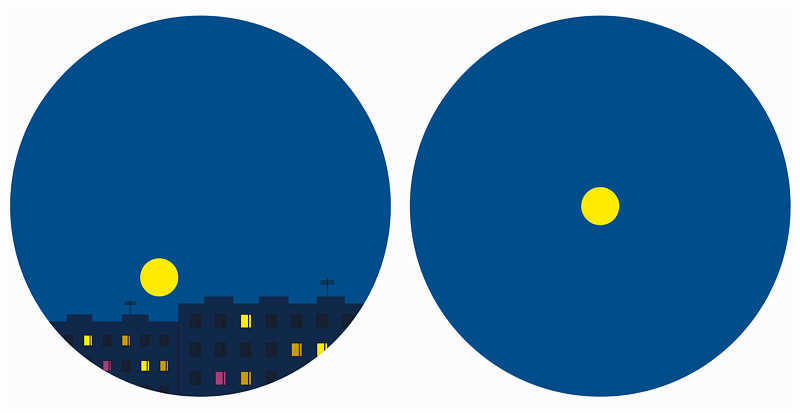
The moon is suspended low in the sky above the houses, creating a striking visual comparison to a house. By envisioning the Moon as being roughly the size of a distant house, we establish a 1:1 correlation – the Moon is like a house. However, it is implicitly understood that the house is far away yet still appears large in itself, surpassing the size of a human, thereby making the Moon also appear large. This concept reinforces the notion that the Moon can be likened to the size of a house. Even if the Moon’s angular size is smaller than that of a house, another perceptual mechanism can come into play: the house is dark, while the Moon emits light. As the saying goes, “white color makes you look fat,” and this principle can be applied to enhance the perception of the Moon’s size in comparison to a house.
Now let us gaze upon the Moon, majestically positioned high in the celestial expanse. Its magnificence is unparalleled, with only the vastness of the sky itself as a worthy comparison. Indeed, the angular size of the sky is a staggering 360 times greater than that of the Moon! In light of this, the Moon appears diminutive in comparison. Remarkably small.
These factors collectively contribute to the Moon’s apparent enlargement when it graces the horizon.
Many individuals have observed that close to the horizon, the Moon (similar to the Sun) appears slightly compressed. The extent of this discrepancy (which disappears as the elevation of the celestial bodies above the horizon increases) is readily apparent to the naked eye and can exceed 10 percent. It is not merely 1.5 percent. It is distinctly visible to the naked eye.
Where does this phenomenon originate? It is improbable that the Moon becomes flattened on its own. Furthermore, an individual in a neighboring time zone on a different planet observes the Moon already positioned high in the sky, and it appears perfectly round, not resembling a melon shape.
When the Moon is at its zenith, its illumination reaches the observer directly through the atmosphere, experiencing minimal absorption and nearly no refraction in the air. Air serves as a medium that refracts light rays, altering their trajectory, similar to water or glass, although to a lesser degree.
If the Moon is positioned high in the sky, its light penetrates the atmosphere at a near perpendicular angle, which minimizes optical distortions. However, when the Moon is low on the horizon, its rays enter the atmosphere at a shallow angle, resulting in stronger refraction and creating fascinating visual phenomena.
These atmospheric effects cause the Moon to appear smaller in height, while its width remains relatively unchanged as if it were directly overhead.
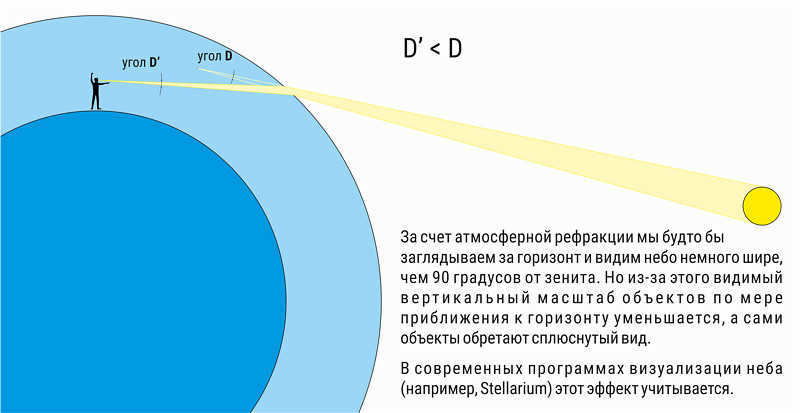
Once again, we are confronted with the fact that when the Moon is near the horizon, its apparent size appears smaller. This phenomenon is known as atmospheric refraction. The impact of atmospheric refraction on the Moon’s perceived size is much more noticeable than the change in its angular cross-section due to differences in distance, as we observed in the previous case. However, it’s important to note that refraction only affects the Moon’s vertical size, and it has a significant impact. During sunrise, depending on the season and air temperature, the Moon can appear as flat as a “scone” or even a pumpkin. However, after a few minutes, the Moon’s flattened appearance will become less noticeable and eventually imperceptible.
The described phenomenon is most noticeable during the initial minutes after sunrise or a few minutes before sunset. This effect can be observed with both the Moon and the Sun, as well as the planets. However, the planets appear much fainter when they are low in the sky, and their transformation can only be observed through a telescope.
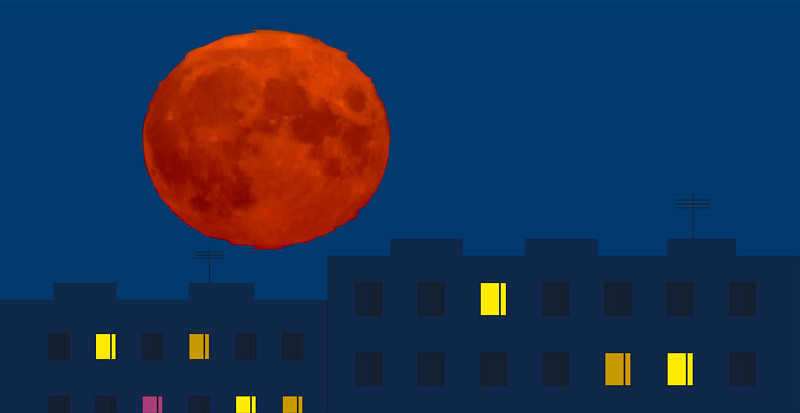
However, that’s not the end of the story
Interestingly enough, the distance between the Moon and the Earth is not fixed. In fact, it can vary depending on its position in its orbit. This variation in distance is the main factor behind the changing apparent size of the Moon as observed from Earth over the course of a month.
However, these transformations happen at a gradual pace – not within a single day, but over the course of a month… although, in reality, slightly quicker. The Moon requires approximately 27 days, plus a fraction, to complete a full orbit – starting from its closest point to Earth (perigee), traveling to its farthest point (apogee), and then returning back to perigee.
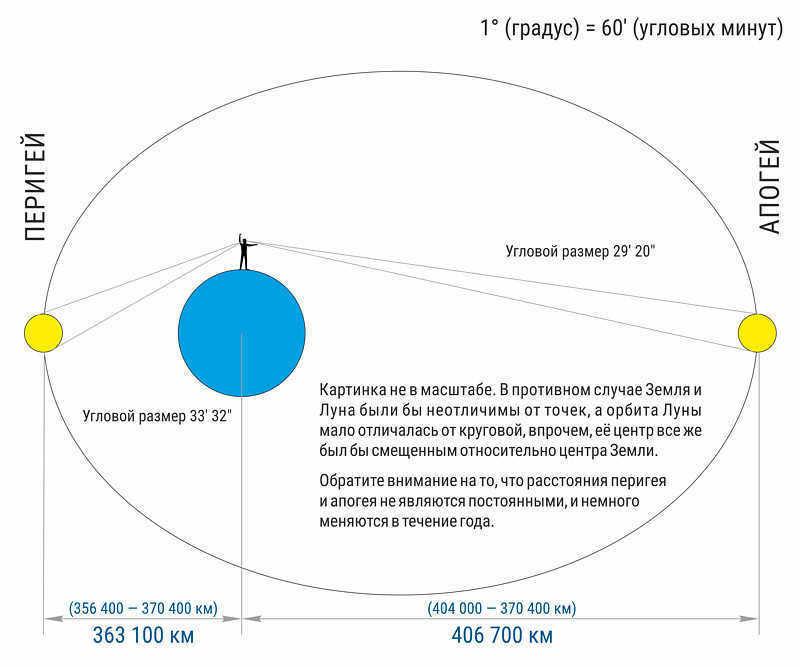
The duration of the lunar phases cycle is slightly longer, approximately 30 days.
Both of these periods are referred to as “months” in the field of astronomy. However, the first one is known as the “sidereal month,” which is the time it takes for the Moon to complete one revolution in its orbit and return to the same position relative to the stars.
The second one is known as the “synodic month,” which is the time it takes for the Moon to complete one full cycle of changing lunar phases. This period is slightly longer than a full orbital revolution because the lunar phases are determined by the relative positions of the Moon and the Sun. After completing a revolution in its orbit, the Moon still needs an additional 2 days to align with the Sun, which has shifted along the ecliptic by a whole constellation.
The distinction between sideric and synodic months leads to an intriguing outcome:
In a calendar year, there are 12 synodic months and 13 sideric months. When individuals learn about the origins of the earliest calendars, including the lunar calendar which is among the first, they often assume that the moon orbits the Earth 12 times in a year, resulting in 12 months in the calendar.
That’s not accurate
Within a span of one year, the moon goes through a complete cycle of its phases 12 times. However, it takes 13 orbits around the Earth, which adds an extra revolution.
This additional revolution is necessary for the moon to catch up with the Sun, which appears to be constantly moving away.
Recently, the term “super moon” has gained popularity, but astronomers strongly oppose it and argue that there is no such thing as a supermoon. Instead, they recognize full moons, new moons, and first and last quarters as the different phases of the moon. According to scientific classification, there is no specific phase called a “super moon.”
Nevertheless, many non-scientific individuals eagerly anticipate the arrival of an unusually large moon, as hyped by sensationalist media. These reports claim that we are about to witness the largest moon in the past 5,000 years.
The truth lies somewhere in between the scientific community’s dismissal of the term “super moon” and the journalists’ attempts to create excitement around the moon.
As it is common knowledge, the Moon will not appear significantly larger – only slightly bigger by a few percent. And on its own, individuals do not perceive the disparity. However, when someone points it out to them, saying: “Behold, this full moon, the moon is unusually massive.” most individuals are compelled and concur: “Indeed, it is incredibly vast!”
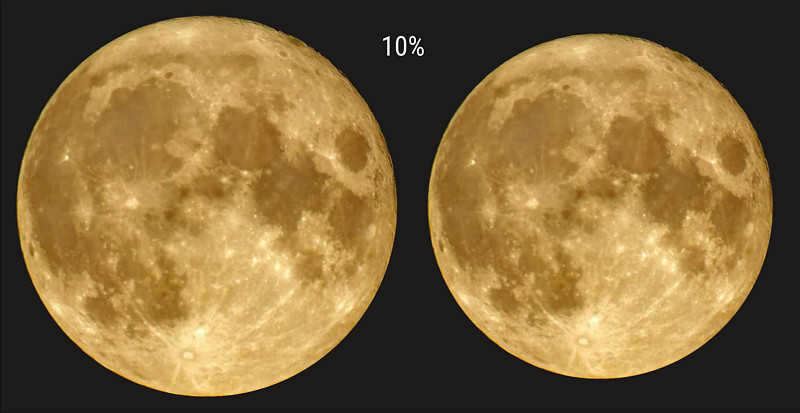
The precise choice of words has the power to magnify the perceived size of the Moon not just by a small margin, but by multiples! This leaves an individual with the impression that they have witnessed a Moon of such immense proportions that only occurs once every 5000 years, making them incredibly fortunate.
In reality, there is nothing extraordinary about this occurrence as the Moon comes into a similar proximity to Earth every 27 days or so. When this alignment coincides with a full moon, the sheer magnificence of its fully illuminated form further reinforces the viewer’s perception of its immense scale.
However, there are occasions when the Moon’s perigee coincides with its crescent phase. In this scenario, the crescent appears much smaller and delicate, as thin and fragile objects tend to give the illusion of being smaller. This phenomenon can be attributed to the principles of psychology. To illustrate this, one can capture images of the Moon using a camera equipped with maximum zoom (a 5x zoom should suffice) on various days. It is recommended to take weekly photographs for a more accurate comparison. By comparing these images, one can easily observe the noticeable difference. However, this difference may not be as apparent when observing the Moon with the naked eye in the sky.
You have the opportunity to conduct an interesting experiment. Capture images of the Moon on different days and take note of when it appears largest to you. Then compare your subjective perception with the photos. You will discover that the Moon may appear larger during certain phases, such as the first quarter (when it is half rounded and facing west), even though the objective size remains the same.
If the Moon reaches its full phase and perigee (closest point to Earth in its orbit) almost simultaneously, when will this occur again?
It will not occur in the following month, as the Moon will not be full when it reaches perigee – it will still be two nights away from fullness (due to the difference between the sidereal and synodic months). In the subsequent month, the Moon will only be halfway to perigee… the difference continues to grow.
However, in the words of Kozma Prutkov, anyone who arrives late to dinner runs the danger of transforming it into an early morning meal.
In due course, the complete lunar orb will collide with the moon at its closest approach on the opposite side. This event is set to occur approximately one year from now. However, it is important to note that it will not precisely take place exactly one year in the future. It may appear that if the lunar orbit’s pericenter consistently faces the same constellation, then the occurrence of supermoons should recur approximately once per year.
Concluding this lunar evaluation is a customary melodic supplement: a compilation dedicated to the complete progression of the lunar stages – what we refer to as the lunar month, or the “synodic month” noted in the article, where the Moon emerges as a slender crescent at the start, gains radiance and energy, reaches fullness, and subsequently diminishes, reverting to the form of a slender crescent, and ultimately perishes….
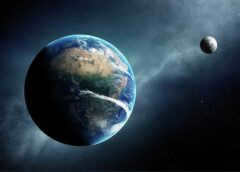
The position of the Moon in relation to Earth has an impact on the magnitude of ocean tides as well as the occurrence of solar eclipses in our atmosphere.
The Moon stands out as the most luminous celestial body in our nocturnal expanse, yet do we know the exact distance that separates it from Earth?
Consequently, what is the precise measurement of the gap between Earth and the Moon…
How far is it from Earth to the Moon?
According to NASA, the average distance between our planet and its sole natural satellite is approximately 238,855 miles (384,400 kilometers).
Since the moon’s orbit around Earth is circular, there are specific points along its path where it is either closer or farther from our planet than this average distance.
MOON IN PERIGEE (what is the closest distance between Earth and the Moon)
When the Moon is at its closest distance to Earth, known as perigee, it is approximately 226,000 miles (363,300 km) away.
If perigee coincides with a full moon, it is often referred to as a super moon. Although not a scientific term, it is commonly used by the astrology community when a full moon occurs within 90% of perigee.
A super moon appears about 17% larger and 30% brighter than the smallest moon of the year. The Moon’s gravitational pull on Earth’s oceans causes tides, and when the Moon is near perigee, the tides can be larger than usual.
When the Moon is at its greatest distance from Earth, known as apogee, it is approximately 251,000 miles (405,500 kilometers) away from our planet. One of the most remarkable natural occurrences during apogee is annular solar eclipses.
Over the next 600 million years, the Moon will be approximately 400 times closer to Earth than the Sun. Since the Sun’s diameter is also about 400 times greater than that of the Moon, the two objects’ disks tend to align almost perfectly during solar eclipses. This results in moments when only the Sun’s corona is visible from behind the Moon.
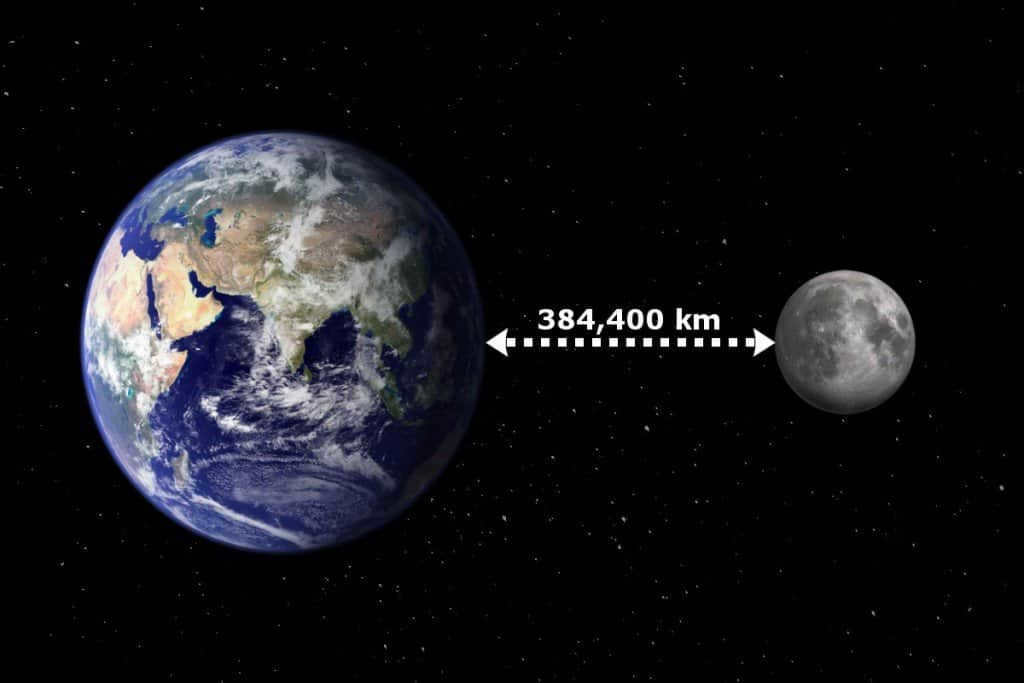

What is the duration of a journey to the Moon?
The time it takes to travel to the Moon depends on several factors. For instance, human missions typically have longer durations compared to unmanned satellite flights. The duration of the journey also varies depending on whether the object is landing on the Moon or simply passing by.
In 1959, the USSR launched Luna-1, the first mission to the Moon. This ball-shaped satellite was launched into space without a propulsion system, and it only took 34 hours of flight time to reach the Moon. After completing a orbit around the Moon, the satellite entered into an orbit around the Sun, located between the orbits of Earth and Mars. This remains one of the quickest trips to the Moon in history.
In 2003, the European Space Agency initiated the launch of SMART-1, which became the pioneering European spacecraft to successfully reach the Moon. Rather than following a straightforward trajectory, SMART-1 employed a unique approach by orbiting around the Earth in order to ultimately reach its lunar destination, a journey that took more than a year to complete. What set SMART-1 apart from previous missions was its utilization of an ion engine, coupled with strategic gravitational maneuvers, to propel itself towards the Moon, making it an incredibly cost-effective mission. Notably, a considerable portion of SMART-1’s expedition yielded valuable insights into the intricate dynamics of the Earth-Moon system.
“Managing SMART-1 was a highly challenging yet fulfilling endeavor,” expressed Octavio Camino-Ramos, the operations manager for ESA’s SMART-1 spacecraft. “The extensive spiral trajectory around Earth, designed to test the solar electric engine through a low thrust approach, the prolonged exposure to radiation, the significant disruptions caused by the gravitational fields of the Earth-Moon system, and subsequently entering an optimized lunar orbit for scientific exploration have provided us with invaluable expertise in navigation techniques for low thrust engines.” He hailed the outcomes as “a remarkable milestone for the future.”
NASA has dispatched eight manned Apollo missions to the lunar surface, with six successfully accomplishing landings. Each mission encompassed approximately three days of space travel.
“Apollo 8 achieved lunar orbit in 69 hours and 8 minutes. Apollo 11, the mission that brought humans to the Moon for the first time, took 75 hours and 56 minutes to enter lunar orbit. However, well before reaching lunar orbit, both spacecraft reached the Moon’s sphere of influence, an area located 33,823 nautical miles (62,630 kilometers) away from the Moon. Apollo 11 achieved this milestone in 61 hours and 56 minutes, while Apollo 8 accomplished it in just 55 hours and 40 minutes.
However, the fastest journey to the Moon was completed by the New Horizons probe, which zoomed past the Moon in a mere 8 hours and 35 minutes. Instead of slowing down or entering lunar orbit, the spacecraft simply raced by on its way to Pluto.
We have obtained information about the distance from Earth to the Moon, but is it fixed?
The Moon used to be much closer to Earth. During the formation of the solar system, as the planets were completing their formation, the protoplanetary Earth collided with a Mars-sized object that may have originated farther from the Sun. This object, known as Theia, caused an impact that led to the creation of the material from which the Moon eventually formed.
Over time, the Earth-Moon distance has been increasing. According to NASA, the Moon is currently moving away from our planet at a rate of approximately 3.8 centimeters per year.
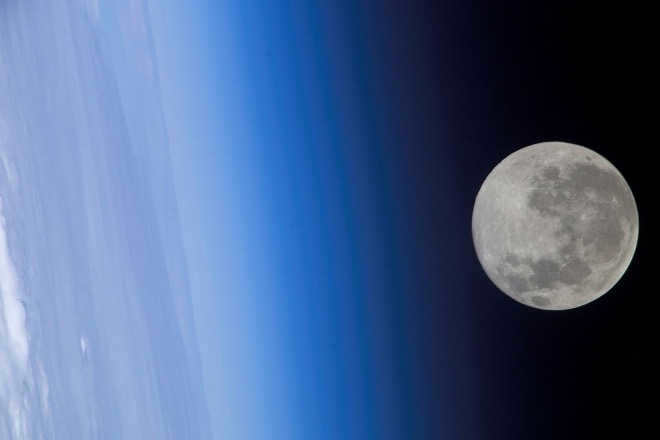
For countless millennia, there has existed a celestial body known as the Moon, which orbits the Earth. Throughout the ages, humanity has marveled at its splendor. In the annals of nearly every civilization, there exist records of the Moon being revered as a deity. It is the second brightest celestial object in the sky, after the Sun, as far as our eyes can perceive. Just as the Sun is the ruler of the day, the Moon can be seen as the sovereign of the night. Its magnificence has been extolled by countless poets. The pale glow of moonlight has always symbolized purity to poets. Although its illumination does not originate from our satellite, but rather is merely a reflection of sunlight.
The era when individuals believed that the entirety of existence revolved solely around them is long gone. We no longer attribute the ability to cause sleepwalking to the Moon. However, we are aware of its impact on Earth. One of the most apparent influences is the moon’s light emission. Due to its smaller size in comparison to Earth, our satellite receives a lesser amount of sunlight. It has been estimated that 600,000 full moons would be required to emit the same level of brightness as the Sun currently does on Earth.
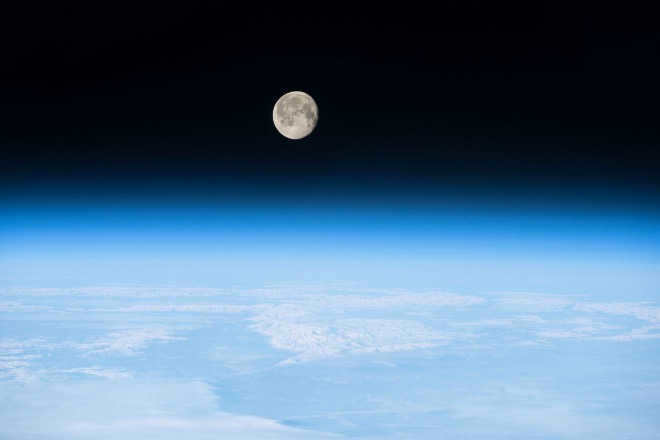
The moon reflects light from the Sun
The Sun constantly shines and always illuminates the side of the Moon that is facing it. This is always the case, except for the few hours when the Earth is positioned between the Sun and the Moon, resulting in a lunar eclipse. The evidence that our closest celestial object does not emit its own light can be seen in the monthly changes that occur to it. We can all observe that when sunlight illuminates one half of the Moon, we do not see the dark part of our satellite at all in the sky.
Sometimes, there is a phenomenon known as “the old month in the arms of the young” in England. Occasionally, we observe a splendid and bright crescent shape, with the rest of the moon appearing very faintly. The visible crescent is illuminated by sunlight, while the remaining portion of the moon is lit by earthlight. This serves as evidence that the Earth also appears luminous when observed from elsewhere. In fact, it reflects enough light to illuminate the moon’s surface, allowing us to occasionally see it alongside the crescent.
Furthermore, the position of the moon between the Earth and the Sun, forming a straight line and blocking our view, is truly unique. This is when a solar eclipse takes place.
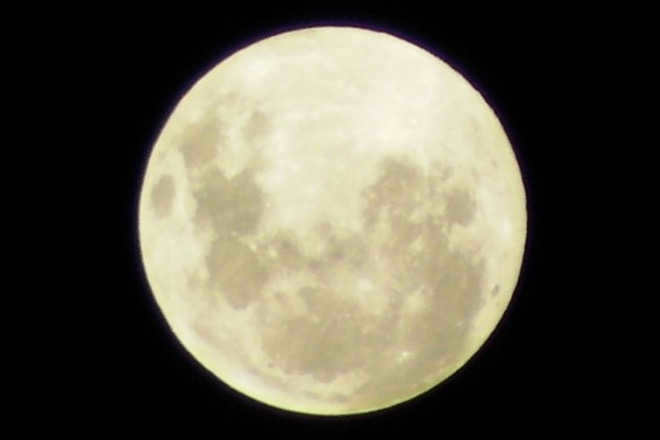
Distance from the Earth to the Moon
The Moon’s brightness is determined by its proximity to us. There are very few smaller bodies in the entire sky that we can see. However, the Moon has a significant advantage because it is much closer to us than any other celestial body. Its distance from the Earth is only 384,467 kilometers, which is less than ten times the Earth’s circumference. When compared to the distance from the Sun or Mars, it is relatively small. This proximity allows us to study the Moon with our telescopes in greater detail than any other object in the sky.
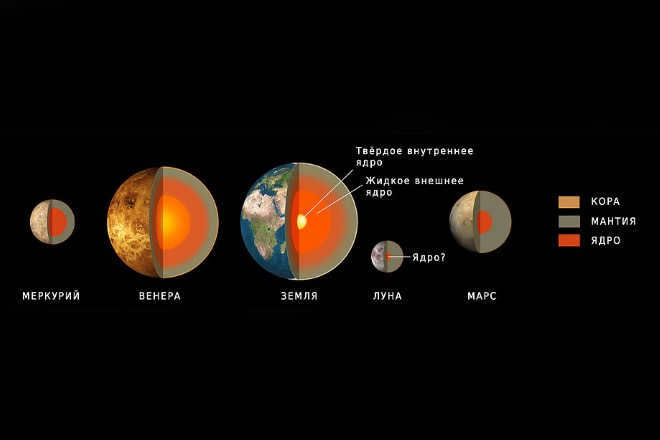
Moon’s Gravity
On the Moon, a person could easily jump across a street. The gravitational force on the Moon’s surface is significantly different from that on Earth. It is only one-sixth of the force on Earth. If a person can jump two meters on Earth, they could jump twelve meters on the Moon. This means that the explosive force of volcanoes, which eject substances upwards, would encounter much less resistance than on Earth. Therefore, it could have formed some of the large structures found on the Moon’s surface.
On Earth, the presence of air, wind, and water has had a significant impact on the events and phenomena that have taken place. Through the study of our planet, we have come to understand the crucial role that air and water play in shaping its surface. In contrast, the Moon exists as a barren world devoid of both air and water.

Lunar soil
The Earth’s atmosphere and water gradually erode and smooth out any unevenness on its surface. However, on the Moon, the absence of these elements means that any mountains or craters formed will remain unchanged for thousands of years. There is one phenomenon on the Moon that can still cause some alteration to its surface in the present day.
Thus, it is essential for the surface to undergo significant contraction during cooling and expansion during heating on a daily basis, resulting in the accumulation of fine dust.

What is the reason for only one side of the moon being visible
The Moon’s rotation on its axis is synchronized with its orbit around the Earth, resulting in only one side of the Moon being visible from Earth. This means that we always see the same face of the Moon. Interestingly, a lunar day, which is the time it takes for the Moon to complete one rotation on its axis, is equal to one lunar month.
It is highly unlikely that the synchronization between the Moon’s revolution around the Earth and its rotation on its axis is a mere coincidence.
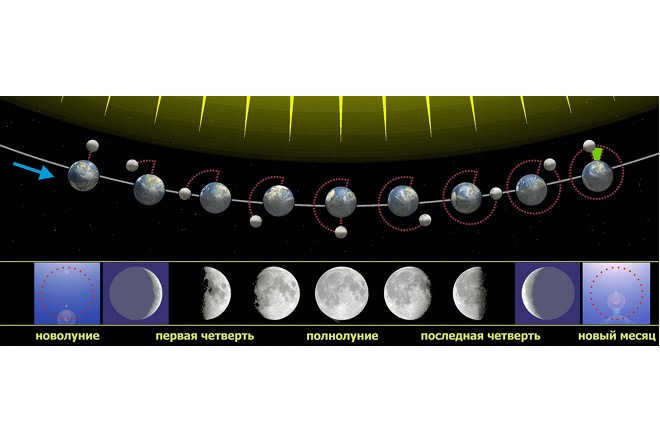
The Perspective of a Moon Resident: What the Earth Looks Like
If there were intelligent beings living on the Moon, they would see the Earth as a much larger object than we see the Moon from Earth. This larger Earth would also cause solar eclipses. However, the size of the Earth, when viewed from the Moon, would seem much larger than that of the Sun. Therefore, if we were to observe a solar eclipse from the Moon, the Earth would not only cover the entire Sun, but also its prominences and corona. Only a faint glow of coronal light around the edges would remain.
Studying the Sun from the Moon’s surface is not feasible for astronomers as it is on Earth. The Moon’s apparent size from Earth is ideal for astronomical observations, and the distances between the Moon and the Sun slightly change during eclipses. Occasionally, the Moon’s disk is too small to completely block the Sun’s body, resulting in a ring of sunlight visible along the Moon’s edges.
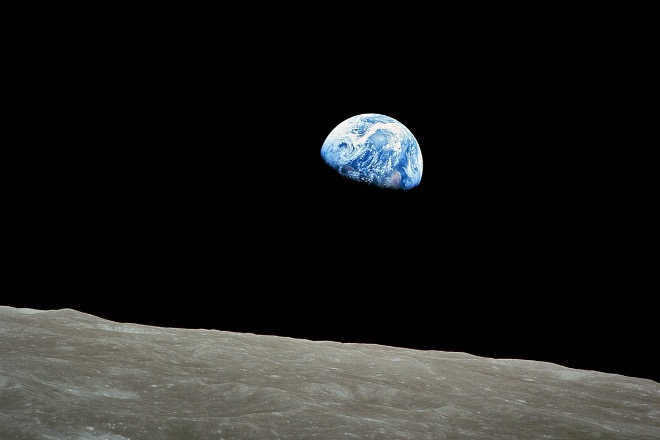
The Path of the Moon’s Orbit around the Earth
According to astronomers, the Moon’s orbit around the Earth is not aligned with the Earth’s orbit around the Sun. If we were to draw it on a flat surface, it may appear that the Moon orbits the Earth at the same level as the Earth orbits the Sun. However, this would prevent us from seeing the full Moon, as the Earth would block the sunlight and cause an eclipse every month.
Additionally, the Moon would eclipse the Sun every month. But if we imagine the Moon’s orbit to be slightly inclined to the Earth’s orbit, we can understand why we are able to see the full Moon. At certain regular intervals, when the Moon’s orbit intersects with the Earth’s orbit, an eclipse can occur.
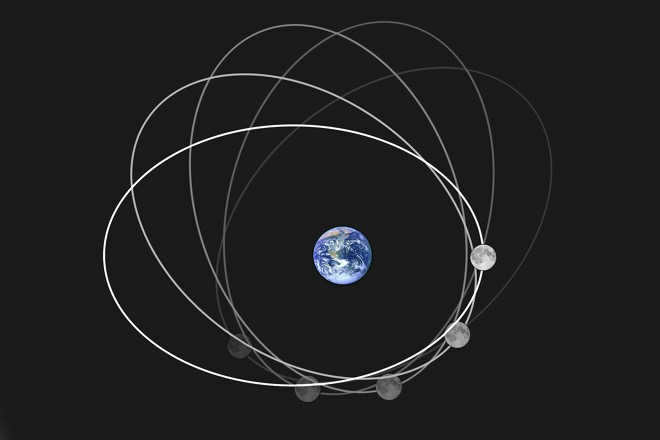
The Moon completes one revolution around the Earth in approximately 27 and 1/3 days, known as a lunar month. During different parts of this cycle, the Moon and the Sun are either aligned on the same side of the Earth or on opposite sides. Between these two moments, the line connecting the Sun and the Earth and the line connecting the Moon and the Earth are approximately perpendicular to each other.
When the Sun and Moon are positioned on the same side of the Earth, their forces combine, resulting in a strong tidal effect that lasts for several days. However, when they are on opposite sides, their gravitational pulls counteract each other, causing a weakening of the Moon’s influence on the tides. As a result, the tides during this period are significantly less intense. During other times, when the Sun and Moon are in intermediate positions, the tides are of average strength. This phenomenon can be easily observed by anyone who carefully monitors the tides on a daily basis for a month.
The conflict between the Sun and the Moon within the grasp of Earth’s gravity
Let’s revisit some basic knowledge about tides, which we are well acquainted with. The relationship between Earth’s tides and the Moon has been understood for thousands of years, even before the discovery of the law of gravitation. We now comprehend that as the Earth spins on its axis, it is influenced by the gravitational force of its natural satellite. The water on the Earth’s surface closest to the Moon experiences a stronger pull from the Moon compared to the solid central part of the Earth, causing it to rise and create a tidal wave. Similarly, the solid central part of the Earth is pulled more strongly than the water on the opposite side of the planet.
The Sun exerts a similar influence as the Moon, albeit with significantly less intensity. This is due to the Sun being situated much farther away from the Earth. During the new and full moons, the gravitational pull of the Sun and Moon align along the same axis. However, at other times, their gravitational attractions exert forces at different angles.
During new or full moons, our tides experience heightened levels, with higher high tides and lower low tides compared to other periods. These elevated tides are referred to as high tides, while the lower tides are known as low tides. The cooperative influence of the Sun and Moon contributes to the occurrence of high tides, whereas low tides result from their opposing actions. As the Moon is much closer to the Earth, it exerts a stronger gravitational force, thus prevailing in this ultimate struggle.
The Moon is undeniably one of the most captivating elements of the night sky, complementing the scattered stars with its luminous presence. Its size and distance from Earth make it the second brightest celestial body and have the power to completely obscure the solar disk during an eclipse. It’s no surprise that this nocturnal luminary has fascinated humanity for countless centuries.
If our planet, Earth, were to exist without the Moon, numerous aspects of our world would be drastically different:
- The length of the day would be considerably shorter;
- The seasons and climate would be much more unpredictable;
- The tides would be noticeably less significant;
- The possibility of life emerging on our planet in its current form would be questionable.
Moon size
The Moon’s size is relatively small compared to other celestial bodies, with an average diameter of 3474.1 km. To put this into perspective, it is approximately half the distance from Moscow to Vladivostok.
However, when it comes to natural satellites in the solar system, the Moon ranks fifth:
Furthermore, when comparing the sizes of satellites to their respective planets, the Moon stands out. It has the largest diameter compared to its planet, being a quarter the size of Earth. In fact, it is even larger than Pluto.
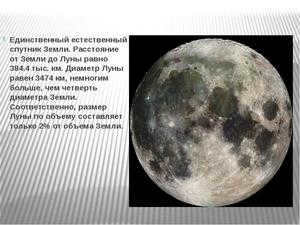
How far is it from Earth to the Moon
The distance between Earth and the Moon is not fixed, it varies. On average, the centers of the planet and its natural satellite are separated by 384,400 kilometers. That space is large enough to accommodate approximately 30 Earths, and it takes light approximately 1.28 seconds to travel that distance.
Suppose it were possible to travel to the closest celestial body by car at a speed of 95 kilometers per hour. Considering that the total distance is approximately equal to 10 times the circumference of the Earth, the journey would take the same duration as making 10 complete loops around the planet’s equator. This amounts to just under six months. Currently, the fastest recorded trip to the Moon was accomplished by the interplanetary probe New Horizons, which reached the Moon’s orbit a mere eight and a half hours after being launched on its way to Pluto.
The initial approximate calculations of the distance to Earth’s “neighbor” were made by Ptolemy in the 2nd century AD. In the present day, the most precise measurements have been made using advanced reflective instruments on a satellite, with an error margin of just a few centimeters. This is achieved by directing a laser beam towards the Moon and tracking the time it takes for the reflected light to return to Earth. With knowledge of the speed of light and the measured time, calculating the distance becomes a straightforward task.
Methods for visually estimating the size of the Moon and its distance from Earth
The Moon is approximately one-fourth the diameter of the Earth and has a volume that is 64 times smaller. The distance between the Earth and the Moon is approximately equal to 30 times the diameter of the Earth. To visually estimate the distance and compare the sizes of the two celestial bodies, you can use a basketball and a tennis ball. Here are the ratios of their diameters:
- The Earth (12,742 km) and the Moon (3,474.1 km) have a ratio of 3.7:1;
- A standard basketball (24 centimeters) and a tennis ball (6.7 centimeters) have a ratio of 3.6:1.
The ratios are quite similar. Therefore, if the Earth were the size of a basketball, the Moon would be the size of a tennis ball.
Imagine if you asked individuals to visualize that the Earth is equivalent to a basketball, while the Moon is equivalent to a tennis ball. Then, demonstrate the actual distance between the satellite and the planet using this scale. Most individuals would likely estimate a distance of around 30 centimeters to a few steps.
However, in reality, to accurately represent the distance, one would need to step back a little over seven meters. This means that the average distance between a planet and its satellite is approximately 384,400 kilometers, which is equivalent to about 30 Earths or 30 basketballs. If you multiply the diameter of a sports projectile by 30, the result is 7.2 meters. This distance is roughly equivalent to 9 male steps or 11 female steps.
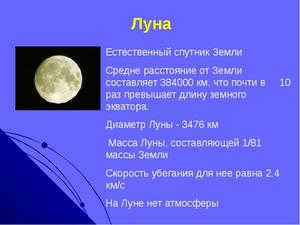
The observable size of the Moon from Earth
amounts to 360 degrees in angle. – encompassing the entire circumference of the celestial sphere. Therefore, the nocturnal luminary occupies roughly half a degree on it (an average of 31 minutes) – this represents the angular (observable) diameter. For comparison: the width of the nail on the index finger, at arm’s length, is approximately one degree, meaning two moons.
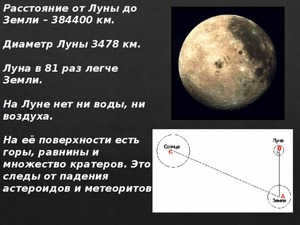
Is the Size of the Moon Subject to Change?
While the true diameter of the Moon remains constant, its apparent size can indeed vary. Particularly, during sunrise and sunset, the Moon can appear significantly larger. When the Moon is low on the horizon, its distance from the observer does not decrease, but instead slightly increases (by the radius of the Earth). This visual illusion may seem counterintuitive, as one would expect the opposite effect. However, there is no definitive explanation for this phenomenon. What we can say for certain is that this captivating occurrence is solely a result of the intricacies of the human brain and not influenced by the Earth’s atmosphere, for instance.
The distance between the Moon and the Earth changes periodically, going from its maximum at apogee to its minimum at perigee. Along with the distance, the apparent size of the Moon also varies, ranging from 29.43 to 33.5 arc minutes. This variation allows for not only total eclipses to occur but also annular eclipses, when the Moon appears smaller than the Sun at apogee. Roughly every 414 days, the full moon coincides with the perigee passage, providing an opportunity to witness the largest possible nighttime celestial body. This phenomenon is commonly referred to as a supermoon, although the apparent diameter is only 14% larger than usual. The difference is quite insignificant, and an ordinary observer would not be able to notice it.
Thanks to accurate measurements, scientists have managed to observe a somewhat gradual yet constant rise in the gap between the Earth and its satellite. The pace at which the Moon is drifting away – 3.8 centimeters per year – is too gradual to perceive a notable decrease in the apparent magnitude of the celestial body. The growth rate of human fingernails is approximately the same. Nevertheless, in 600 million years, the Moon will be positioned so far away and therefore diminished for observers on Earth that total solar eclipses will become a thing of history.
It should be acknowledged that the celestial body orbiting the Earth It is worth noting that the celestial body orbiting the Earth, which is believed to have formed 4.5 billion years ago as a result of a collision between the Earth and a large object, was initially positioned 10-20 times closer. Nevertheless, there was no one to appreciate the sight of a sky adorned with a luminary that was 10-20 times larger in size than it is now.
If you want to gain an understanding of the distance between the Earth and the Moon, you can take a look at this video.
The size of our satellite varies at different points in the month, increasing by 15% on certain days. Additionally, during this period, it appears one third brighter. These occurrences can be attributed to the fluctuating distance between the Earth and the Moon.
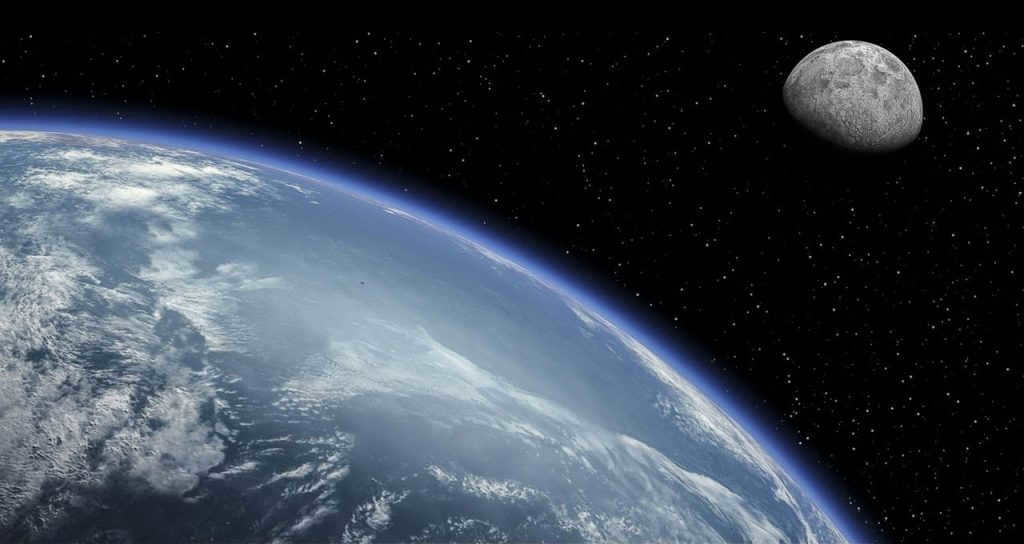
Ancient Greek Astronomers and Their Calculations of the Moon’s Distance
Efforts to quantify the distance between our planet and its satellite began once humanity recognized that the Moon was a separate celestial body situated at a significant distance from Earth.
The ancient Greek astronomers were the first to embark on this endeavor. One such astronomer, Aristarchus of Samos, attempted to ascertain the desired distance using geometric principles, particularly by employing the method of right triangles and utilizing knowledge of Earth’s diameter. However, due to an incorrect scaling, he made an error that led to an estimation nearly 20 times greater than the actual distance.
The Evolution of Techniques for Measuring Distance
The medieval methods of measuring distance were primarily based on mathematical and geometric calculations, which relied on ancient Greek scholars’ work and ongoing observations. As technology advanced, distance measurement research began to incorporate data from telescopes, and in the twentieth century, computing machines and spacecraft were utilized.
The most recent and widely used distance measurements are now conducted using laser beams. On the lunar surface, there is a dedicated reflector that was installed during previous research missions. This reflector allows a beam of light to be sent from Earth and reflected back to a detector on Earth after bouncing off the Moon’s surface.
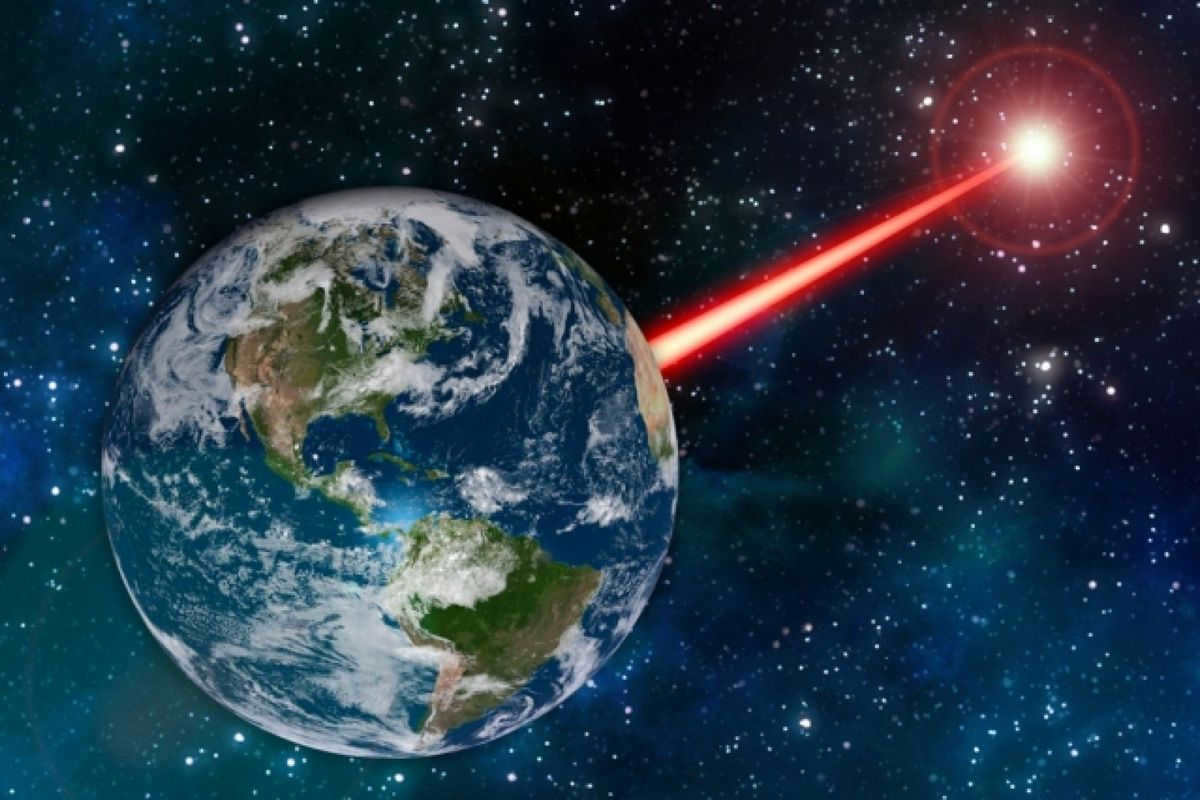
All the necessary calculations were performed using the data on the speed of light and the measured time it took for the rays to travel a specific distance.
Determining the Distance from Earth and its Variations
It is impossible to provide an exact measurement in kilometers as the Moon follows an elliptical path, constantly moving away from and then approaching our planet.
Furthermore, the lunar orbit unravels slowly, causing the satellite to move 38 mm further away from us each year.
In addition, the Moon’s movement is influenced by Earth’s flattening and the strong gravitational forces of the Sun, which attract our satellite 2.2 times more strongly than we do.
An average distance of 384.4 thousand kilometers is commonly used as the value. Astronomers refer to this as the major semi-axis.
Perigee
The perigee is the point at which the Moon is closest to Earth, with a minimum distance of 363.1 thousand kilometers. However, this distance is not constant and can vary from 356.4 to 370.4 thousand kilometers when the Moon reaches its perigee. The exact distance is influenced by various external factors.
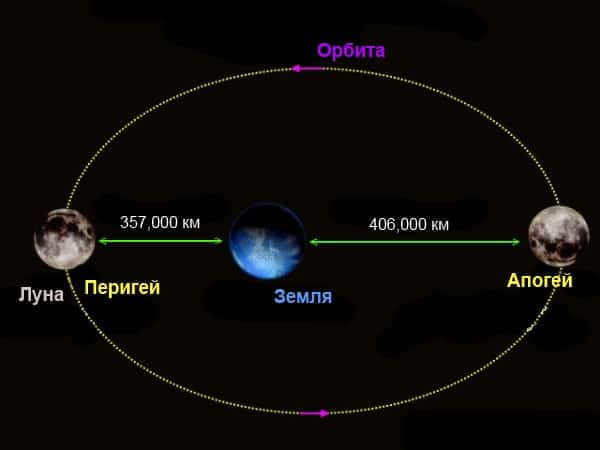
A super moon is the astronomical phenomenon that occurs when the Moon’s perigee coincides with its full phase.
Apogee
During apogee, the Moon is situated at a distance of 405.7 thousand kilometers from us. This is an average value that is used for convenience in calculations, but the actual distance can range from 404 to 406.7 thousand kilometers.
There is a term called “micro moon” that describes the phenomenon when the Moon is both in its full phase and at the farthest point from the Earth in its orbit.
How Distance Changes Over Time
Astronomers have determined that in its early days, our moon orbited around the Earth at a distance of approximately 15-20 thousand kilometers. As humans began observing this celestial body, our ancestors believed that the Moon was 20 times larger than its current size.
There is a mysterious explanation for why ancient scientists’ predictions of solar eclipses, made many centuries ago, do not align with the actual dates of these events in more recent times. British astronomer E. Halley suggests that this discrepancy may be due to the lengthening of Earth’s day over many centuries. This lengthening could only occur if the Moon gradually moved away from our planet’s surface.
Recent studies have corroborated the gradual “departure” of the Moon – continuous measurement of its distance from our planet has proven sufficient.
Precise radar and laser measurements have demonstrated the yearly increase in the Moon’s distance from us by 3.8 cm.
In theory, there is a possibility that the Moon will eventually break free from the Earth’s orbit. However, prior to that happening, the Moon will no longer exert a gravitational influence on us, resulting in the Earth becoming tidally locked to its satellite. The exact date of this event cannot be determined at this time, but scientists estimate that it will occur no sooner than 616 billion years from now.
The mean distance between the Sun and the Moon is believed to be the same as the Earth’s major axis, which is approximately 149.6 million kilometers.
During the new moon, the actual distance between the celestial body and the satellite can be approximately 384.5 thousand kilometers less, while during the full moon it can be the same amount more.
However, these values, which are considered insignificant in the field of astronomy, are disregarded in calculations.
Duration of the Journey to the Moon
The duration of the space journey to the Moon has been explored through numerous flights from Earth. Here are some notable examples:
- The Chinese Chang’e-1 spacecraft completed the journey in approximately 5 days using standard rocket engines in 2007.
- The shortest manned flight to the Moon lasted approximately 3 days and almost 4 hours, which occurred in 1969.
- The first Soviet flight to the Moon, conducted by the Luna-1 vehicle, was one of the fastest at the time, taking just 2 days to reach the destination and passing within 500 km of the lunar surface.
- NASA’s New Horizons interplanetary probe holds the record for the fastest modern flight to the Moon, reaching the satellite in a remarkable 8.5 hours. However, it did not land on the Moon’s surface and instead flew past.
According to theory, it should take about 10 hours to travel from Earth to the Moon when the Moon is at its closest point to Earth, known as perigee. However, the actual flight will take longer.
Traveling in a straight line is not possible because our planet is constantly moving in space at a high speed. As a result, every hour, the spacecraft will drift away from the intended path, requiring course corrections.
Furthermore, the spacecraft will not maintain a constant second space velocity of 11 km/s, which is necessary to leave Earth’s orbit. After launch, the engines will gradually increase speed to escape the gravitational field, and when approaching the Moon, the spacecraft will need to slow down.

